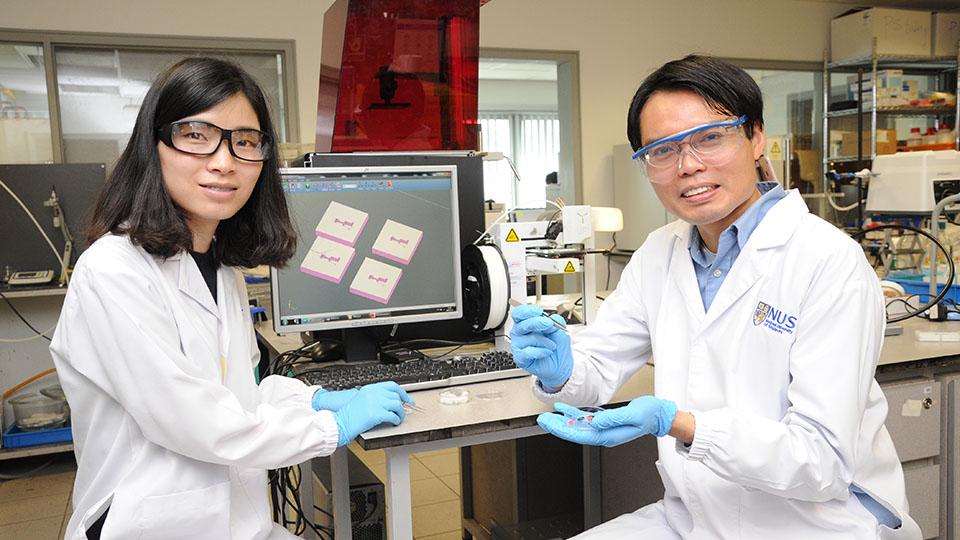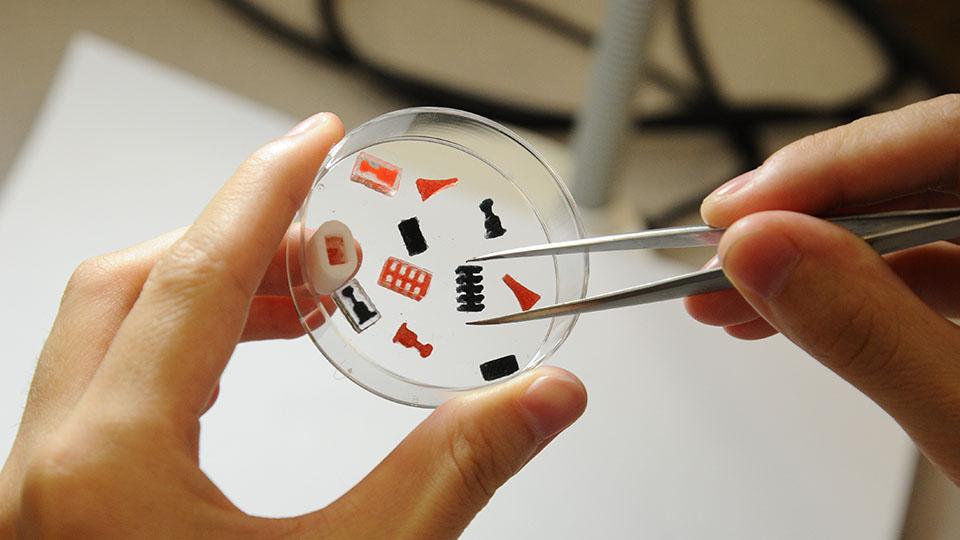 Amidst the long list of pluses, there are a few things that are controversial in 3D printing with some of the light and dark and pros and cons frustratingly intertwined, as we discuss hot points like guns (alas, criminals might get them!), the fabrication of body parts (yikes, is that like cloning?) and pills (shockingly, people might abuse them).
Amidst the long list of pluses, there are a few things that are controversial in 3D printing with some of the light and dark and pros and cons frustratingly intertwined, as we discuss hot points like guns (alas, criminals might get them!), the fabrication of body parts (yikes, is that like cloning?) and pills (shockingly, people might abuse them).
The benefits afforded in 3D printed medications are vast however, and many people one day all over the world will be very excited to purchase their much more affordable, patient specific medications. With so much news following the FDA approval and commercial availability of the 3D printed, porous SPRITAM pills, used for treating epilepsy, one can only wonder what will follow next. And if the current research going on in Singapore is any indication, things are about to take a major turn, beyond what most of us have ever imagined.
At the National University of Singapore (NUS), researchers are engaged in not just one innovation regarding medications, but several—and all of them have the potential to change the face of how pharmaceuticals are manufactured and used. For instance—that big pill container that almost resembles a tackle box, meant to dole out every pill for every day of the week? What if you could say goodbye to that and just take one pill each day, with everything rolled into one dose? This would probably eliminate many issues with drug interactions as they would be considered in the manufacturing of one cumulative dose, as well as cutting out the simple issue of forgetting pills or feeling overwhelmed by the schedule involved.
Delayed drug release is another big challenge that the researchers, Assistant Professor Soh Siow Ling and PhD student Sun Yajuan from the Department of Chemical and Biomolecular Engineering at the NUS Faculty of Engineering, are exploring. Again, innovation here could call for just one pill rather than several throughout the day, for example, as an arthritis patient tries to stay ahead of the pain. And with arthritis, often one big dose is needed at first, with small pulses later as the first dose is maintained.
Most importantly, imagine if doctors could simply 3D print your pills right from the office, allowing for the exact dosage—no more cutting pills in half—and customized exactly to your condition. That means no more physician’s chicken scratch on a piece of prescription paper—and no more waiting in long lines at pharmacies either, as it just becomes part of the visit to the doctor.
“For a long time, personalized tablets has been a mere concept as it was far too complex or expensive to be realized. This new tablet fabrication method is a game changer – it is technically simple, relatively inexpensive and versatile. It can be applied at individualized settings where physicians could produce customized pills on the spot for patients, or in mass production settings by pharmaceutical companies,” said Asst Prof Soh.
Their new idea for fabricating more effective pills with more effective ways to take them is fascinating—and makes complete, logical sense. Most of us are familiar with 3D printing in terms of the traditional layering method, but for the new concept designed by Soh and Yajuan, polymer tablets are made in a shape conducive to the release rate for a drug. If a drug needs five pulses altogether after ingestion, it will be made in a five-prong shape.
The medical professional simply enters the medication profile into specialized software that then creates a template or mold for rapid and affordable manufacturing of the 3D printed pills directly at the office.The mold is responsible for shaping the polymers, which are infused with medication, and inside a casing impervious to liquid. The polymer then solidifies during the UV curing process, filling in any gaps as well. This method would also allow for the loading of multiple medications into one dose with even that pill offering multiple delayed dosages.
“The system is easy to use and does not involve any complex mathematical computation whenever a new release profile is needed,” states the press release from the National University of Singapore. “The fully customisable system is able to create a template to print tablets for any release profile.”
The researchers foresee this as having great potential due to the ease and affordability offered by 3D printing, as well as the customization options for shapes and sizes. At NUS, they are currently in the process of looking into commercialization for these concepts as well as continuing to examine the different materials which would be most effective in 3D printing the customized pills. Would you be willing to take a 3D printed pill? Discuss further in the 3D Printed Customized Meds forum over at 3DPB.com.
[Source/Images: National University of Singapore]Subscribe to Our Email Newsletter
Stay up-to-date on all the latest news from the 3D printing industry and receive information and offers from third party vendors.
You May Also Like
NSF Awards Kentucky $1M for Advanced Manufacturing
The National Science Foundation has awarded a $1 million grant to the University of Louisville for the Advancing Manufacturing and Building Construction Technologies (NSF AMT) project. This initiative is part...
3D Printing News Briefs, May 11, 2024: 3D Printed Stent, Tower, Sculptures, & More
We’re starting off with medical research in today’s 3D Printing News Briefs, as researchers in Korea used CT images and 3D printing to fabricate an educational simulator for a mastoidectomy....
3D Printing Unpeeled: Wind Turbines, Probiotics and Lenses
TPI Composites, ORNL and Ingersoll Rand are working to make wind turbine tooling segments that can be 18.3 meters long. These elements also include resistive wires that help keep the...
Tethon 3D Releases Cost-effective Bioprinter
Tethon 3D, known for its ceramic-loaded DLP materials, custom resins, and DLP 3D printers, has recently released a bioprinter. Vat polymerization printers like DLP systems have been widely used by...



































